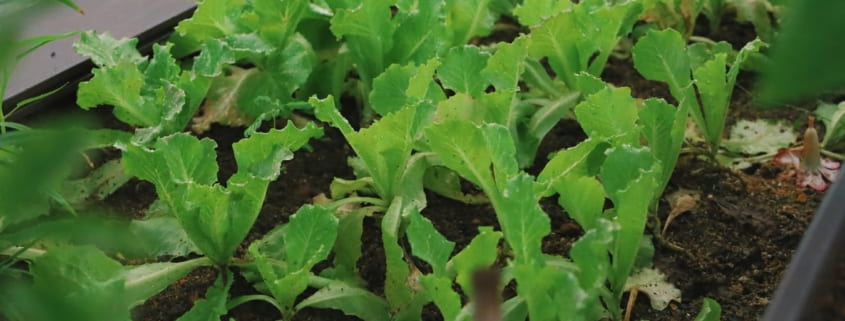Stimulating demand for local produce through a cashback scheme
By Shaharaj Ahmed (’23) and Thomas Bean (’24)
This op-ed is a primer for a Local Produce Cashback scheme for Singaporean farmers, proposed by Bryan Teo Jun Kai (’24), Lee Shao Ming (’24), Shaharaj Ahmed (’23), and Thomas Bean (’24).
For more details on the scheme, refer to Policy Memo The Next Step in Singapore’s Food Story: Encouraging Demand for Local Produce.
When walking into a Fairprice outlet, one might think there is always an abundance of cheap food and shelves stacked with affordable produce. However, COVID-19 highlighted the possibility of an alternate food-insecure Singapore with empty grocery stores [1].
The pandemic tested the rigidity of Singapore’s supply chains. While the island-nation overcame supply deficits caused by the pandemic through forging new relationships [2], it is clear that Singapore should diversify food sources to feed its population without disruption. One of the most sustainable long-term options at hand is to bring food production back into the Republic.
This move to bring food production back into the country is more urgent given climate change.
Climate change is expected to harm Singapore’s food security by reducing global food production. Projections suggest that arable land will decrease, more frequent and intense weather events such as droughts and storms will lead to greater crop losses, and the acidification of warming of oceans will negatively impact marine stocks [3]. This may lead to Singapore facing reduced accessibility to food stocks and greater expenses when importing food.
To increase food security, the city-state must increase local food production. To this effect, Government has already introduced several policies, including the recent allocation of another SGD 30 million in 2020 to accelerate local food production [4].
However, simply increasing supply through subsidies and grants does not guarantee a permanent and resilient local food production system. Demand must also be developed alongside supply to make sure that food producers have a sustainable consumer base.
Currently, local producers face the issue of low domestic demand as they do not grow the varieties of vegetables consumed by the majority on a day-to-day basis [5]. Due to Singapore’s land scarcity, there is a strong push towards vertical farming and plant factories as the future of local vegetable production [6]. However, not only is it technically difficult to grow popular local vegetables at competitive rates in these ‘upgraded’ farms, it is also a lot more cost-effective to grow salad greens that can be sold for a premium [7].
Boosting demand will allow local farmers to justify ramping up local production, allowing them to achieve economies of scale and sell local produce at competitive rates.
To create demand, we propose that the Singapore Food Agency (SFA) could work together with the National Environmental Agency (NEA) to stimulate demand from hawkers for local produce via a cashback scheme. Under the scheme, hawkers at NEA-run hawker centres will receive cashbacks on the local produce bought.
Further, the SFA can create a labelling system similar to ones used to label local produce in supermarkets, to signal to consumers which hawkers use local produce. When consumers eat dishes with local produce which generally has greater freshness and quality, they may choose to ‘buy local’ at supermarkets and hawker centres in future, stimulating even greater demand.
Of course, it must be acknowledged that not all hawker centres can participate in the cashback scheme. Most drink stalls would be instant losers of this scheme. Moreover, due to economic, climate, and technological constraints, Singapore may not produce either the variety or quantity of food that hawkers use since agri-food producers preferentially grow specific varieties of vegetables. Thus, the prospect of an advantaged and disadvantaged group of hawkers emerging is possible.
One possible solution is that the cashback offered on the produce would be so minute in value that relative to hawkers unable to participate, the profit gained by the participating hawkers would be non-too significant. Yet, the value gained by the participating hawkers would be such that it incentivizes them to continue to purchase local produce. For example, a 5c reduction per bundle of bok choy may realize a gain of 50$ per month for a noodle store, assuming that the store uses up 30 bundles a day.
Another possible method is to ensure that at least all hawkers will have access to one ingredient that is locally produced, thus reducing inaccessibility to this cashback scheme. For example, offering cashback on eggs may allow drink stalls offering egg and toast to hop on the scheme. Another example is for cucumbers to be grown locally such that it allows chicken rice hawkers to participate as well. It is clear to see that the success of this scheme depends on the ability of farms to match the demands of hawkers.
Some may also believe such a scheme is unsustainable as it leaves hawkers and local farmers dependent on long-term government subsidies to boost local demand and production of local produce. This should not occur — the scheme should be short-term, concluding once it has stimulated sufficient demand to allow local food producers to achieve economies of scale and sell their products at prices competitive with food imports grown using conventional methods.
The cashback scheme can go a long way towards stimulating demand, but it will not be as effective without other supporting policies. Other schemes are required to encourage the production of other vegetable varieties in the long-term. For example, the SFA could assist to encourage contracts between hawkers and food producers would allow local food producers to grow new varieties of vegetables with guaranteed demand, reducing innovation risk.
Modifying the education curriculum in primary and secondary schools to include Singapore’s food story, continued financial support for producers to increase productivity, and the development of government-supported platforms to encourage partnerships between local food producers and F&B companies are other actions that will also help Singapore move closer to its food self-sufficiency goals.
It is clear from the pandemic and the long-term threats of climate change that Singapore must begin to reduce reliance on imported food. A cashback scheme that helps to stimulate demand from hawkers along with other supporting policies will go a long way to helping Singapore do this.
Endnotes
- Audrey Tan, “Coronavirus: Politicians, supermarkets urge calm amid panic-buying of groceries”, Straits Times, February 10 2020, accessed 30 December 2020, https://www.straitstimes.com/singapore/health/coronavirus-fairprice-chief-urges-calm-amid-panic-buying-of-groceries-singapores
- Lay, Belmont, “S’pore welcomes first shipment of eggs from Poland: Trade minister Chan Chun Sing.” Mothership, June 05 2020, accessed 30 December 2020, https://mothership.sg/2020/06/fresh-eggs-poland-singapore/
- Mbow et. al,, Food Security. In: Climate Changeand Land: an IPCC special report on climate change, desertification, land degradation, sustainable land management, food security, and greenhouse gas fluxes in terrestrial ecosystems, (Intergovernmental Panel on Climate Change (IPCC), 2019), https://www.ipcc.ch/srccl/chapter/chapter-5/
- Ministry of Environment and Water Resources (MEWR), “30×30 Express: Ramping Up Local Production to Enhance Singapore’s Food Security”, April 8 2020, accessed 30 December 2020, https://www.mse.gov.sg/resource-room/category/2020-04-08-press-release-on-30-x-30-express/
- Cara Wong, “Demand for local produce must complement supply in local food production: Amy Khor”, Straits Times, July 18 2020, accessed 30 December 2020, https://www.straitstimes.com/singapore/environment/demand-for-local-produce-must-complement-supply-in-local-food-production-amy
- Agri-Food and Veterinary Authority of Singapore (AVA), “Future of farming: Singapore’s agriculture sector needs to embrace technologies or innovations that can help to achieve quantum leaps in productivity.”, Food for Thought, January 1 2017, accessed 30 December 2020, https://www.sfa.gov.sg/food-for-thought/article/detail/future-of-farming
- Mateusz Piechowiak, “Can Vertical Farming Grow Beyond Herbs and Leafy Greens?”, Vertical Farming Planet, n.d, http://verticalfarmingplanet.com/can-vertical-farming-grow-beyond-herbs-and-leafy-greens/


 https://dunmanhigh.moe.edu.sg/
https://dunmanhigh.moe.edu.sg/
Leave a Reply
Want to join the discussion?Feel free to contribute!